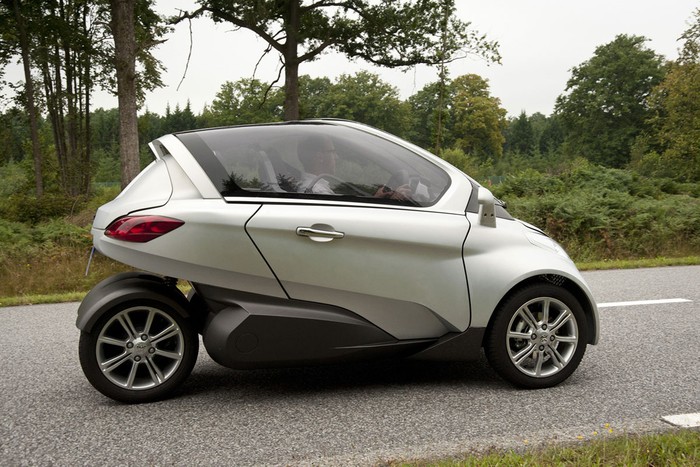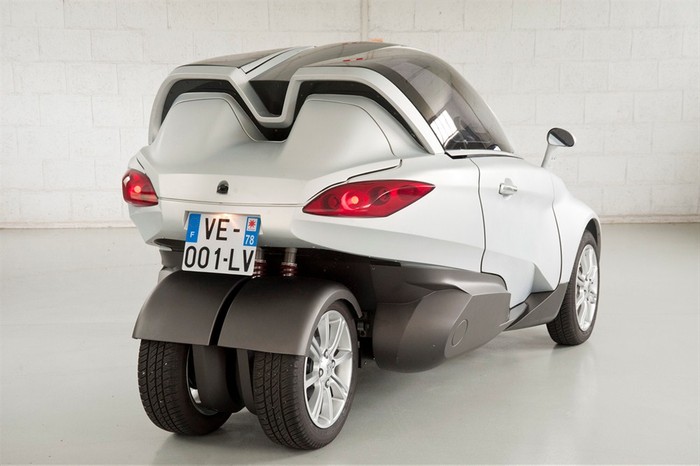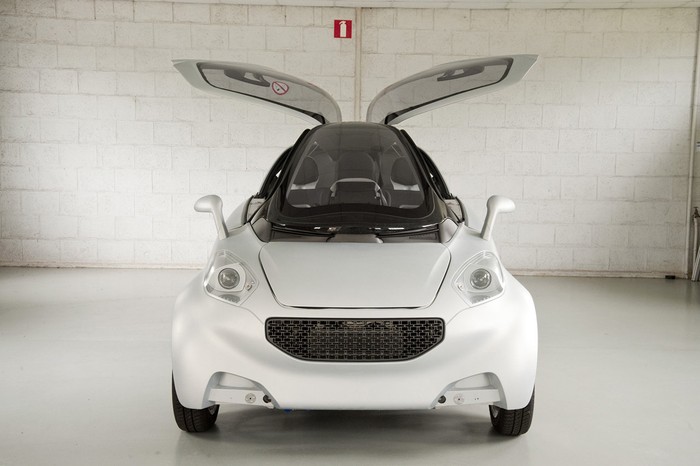

Peugeot reveals VéLV prototype
This electric three-seater could see the light of production if it generates enough interest.
The microcar segment has risen from its ashes and grown exponentially over the past couple of years. Several were on display at the Frankfurt Motor Show earlier this month, including the Opel RAK e, the Audi Urban Concept and the Volkswagen NILS.
The Renault Twizy Z.E. was the only French car to surf that wave until yesterday, when PSA took the sheets off of their own electric microcar dubbed the VéLV. The name is an acronym for Véhicule électrique Léger de Ville, French for light city electric vehicle.
The VéLV is a mix between a scooter and a car. It has four wheels but the rear track is much narrower than the front track, giving it the appearance of a trike. The driver sits front and center and two adult passengers can theoretically travel in the back.
To enhance passenger comfort, the VéLV is fitted with a new heater developed specifically for small electric cars by French firm Valeo.
Thanks in part to a 20 kilowatt electric motor the VéLV boasts a top speed of approximately 70 miles per hour. Fully charged it has a range of 62 miles and a screen on the dash tells the driver how many of them are left and the location of charging stations nearby.
According to PSA, the VéLV has been crash tested and declared fully street legal. It could enter production if the prototype generates enough interest. If it is given the green light it would mostly cater to fleet buyers and rental car companies.
Interestingly enough, the VéLV prototype has a retro twist to it. Peugeot built the VLV (Véhicule Léger de Ville, or light city vehicle) from June of 1941 to February of 1945. It was a small, two-seater convertible with four wheels and a narrow rear track. Power was provided by an electric motor that drove the rear wheels and gave the VLV a top speed of 22 miles per hour. Only about 377 of them were built.
